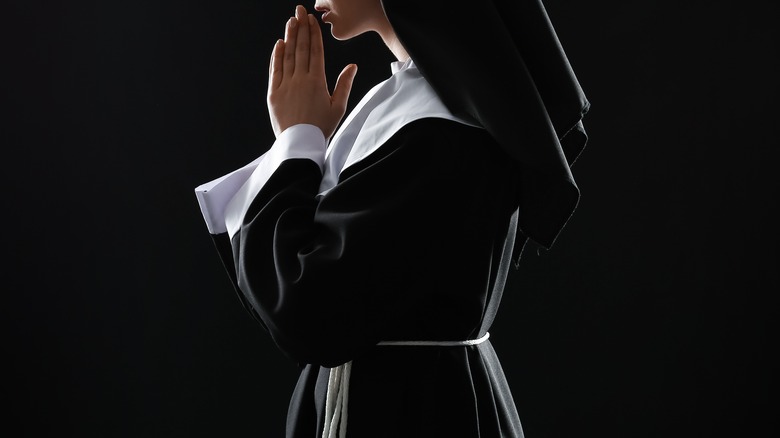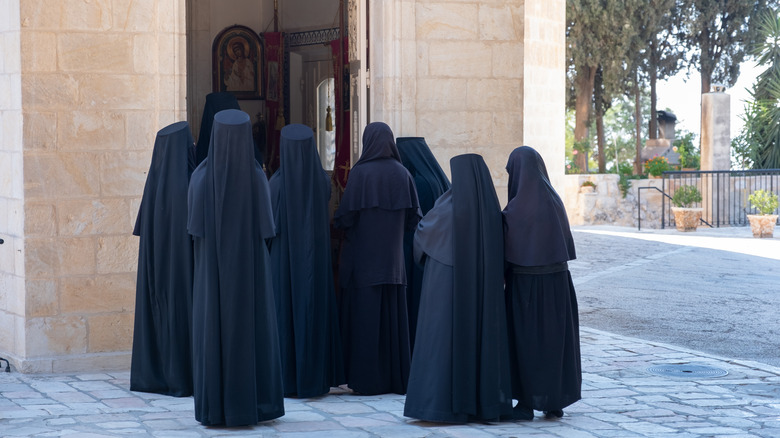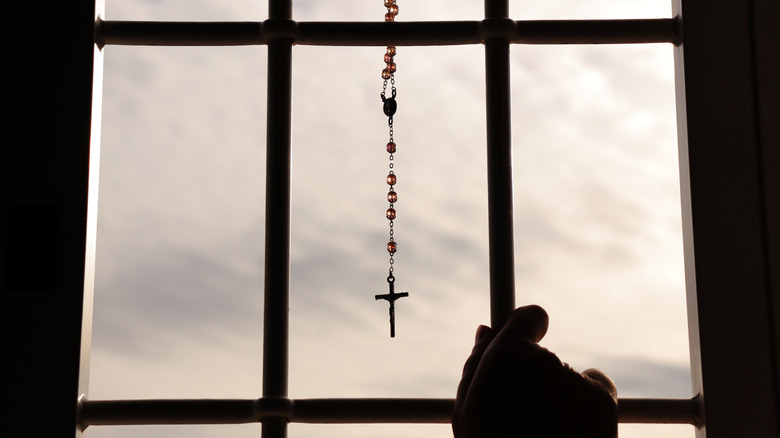Why Nuns Wear Black
While many folks might know about nuns in the broadest, most basic sense possible, a lot more goes into the life of a nun than we see on the surface. They adhere to strict daily timetables that incorporate prayer, cooking, working, and more at specific times (like the schedules of the Benedictines in Herefordshire, England). Nuns progress through numerous levels of initiation that — like in the case of the Handmaids of the Precious Blood — take nine to 12 years to complete and include ranks like aspirant, postulant, novice, solemnly professed sister, and so forth. In the most general sense, nuns also abide by three well-known tenets: faith, poverty, and chastity. Nuns of many orders also often keep their hair covered as a sign of respect to the Almighty. And similarly, they wear a familiar garb that is often, but not always, black.
It ought to be pretty obvious why women seeking to live a life of humility, piety, honor, etc., wouldn't adopt a garish, loud color scheme for their appearance. It wouldn't really make sense if nuns wore orange shoes with polka dot skirts, shirts slashed with fuchsia and yellow streaks, and headpieces printed with cat faces. But why black? Nuns of certain orders do wear white and gray, or pieces of different, muted colors. Black, though, as Theosis Christian tells us, represents repentance and simplicity. Even more drastically, Aleteia says it represents "death to the world."
Forsaking worldly desires
In the end, the choice of black for nuns' habits boils down to penitence, which is central to Catholicism on the whole. Black equates with contrition and forgiveness. OnePeterFive explains that black also relates to forsaking worldly desires and vanity to be "brides of Christ." A black habit, in a way, looks like a type of wedding gown characterized by "otherworldly beauty." "The habit does not make the monk," OnePeterFive says, but rather, exterior choices reinforce inner values. Substituting all clothing with a mandatory, refined black "habituates our body and our soul to the ascetical life." Plus, Aleteia says that black was the cheapest color available in the 6th century when the Benedictine order — one of the oldest monk orders — was founded.
That final point raises an issue central not only to the choice of black for nuns' habits, but nuns' clothing on the whole. Namely: nuns' habits didn't crop up overnight — they're the by-product of hundreds, sometimes thousands, of years of accumulated rules. OnePeterFive says that the scapular, for instance — an apron-like piece that drapes around the shoulders — dates back to St. Benedictine and symbolizes the burden of a pious life. The wimple that drapes around the head and neck, by contrast, didn't appear until the 13th century. It was adopted for modesty reasons, same as it was for married women. Veils, on the other hand, exist across numerous cultures going back thousands of years.
Changes of habit
Even though black is the color most often associated with nuns, there are enough exceptions to the rule to call the rule itself into question. The typical black-with-white habit that people might envision when hearing "nun" is most likely the Benedictine habit, and there are many, many variations on the theme. Each order has different cuts of fabrics, pieces, layers, and yes, oftentimes colors. And that's not even counting what Wired describes as "nun fashion," which includes not only footwear but also what might be deemed accessories like rosaries and medals.
The Little Sisters of the Poor nun order, for instance, wear a gray veil rather than white or black. The Congregation of the Daughters of Wisdom wears mostly gray and white in largely relaxed ensembles suited to outreach, with little to no black. Contrarily, Sister Claire-Edith de la Croix on Quora says that Carmelites or Franciscans might wear mostly brown, depending on their specific community. Cloistered Life shows us that nuns of the Order of Poor Clares might also wear brown, but maybe only the tunic portion. Meanwhile, the Missionaries of Charity — founded by Mother Teresa — have adopted the very different, white-and-blue sari, a wrap-around dress commonly worn in India. Per Catholic News Agency, their order officially copyrighted their look only as recently as 2016. Black might be common, but it's far from universal.


